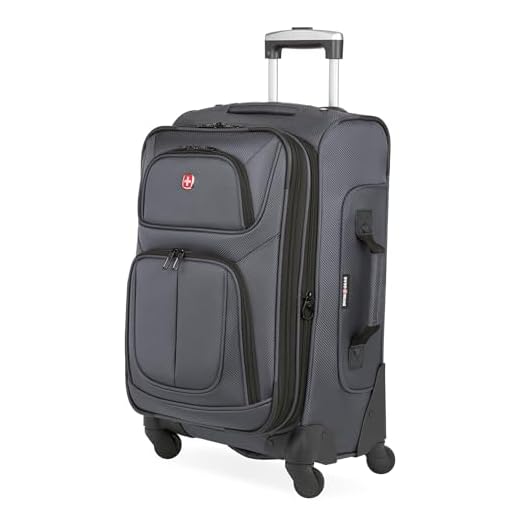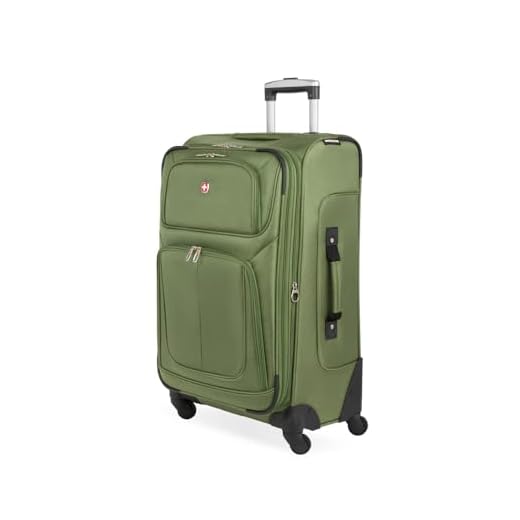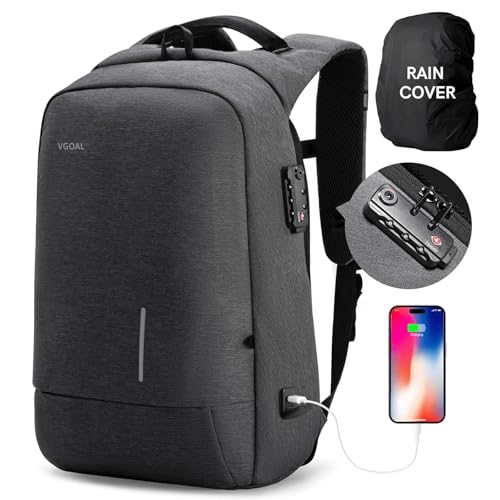





Secure valuables and important documents in a carry-on that stays with you. Prioritize electronics and medications, ensuring they are easily accessible during transit. Consider using a theft-proof bag for added security against pickpockets.
Weigh and measure belongings to avoid exceeding airline restrictions. Many airlines impose strict limits on weight and size, which may result in unexpected fees at the airport. Utilize a luggage scale and packing cubes to maximize space.
Consider organizing items into categories–clothes, toiletries, and gadgets–to enhance packing efficiency. This strategy facilitates quick retrieval and helps you remember essential items. Double-check your itinerary for any guidelines regarding prohibited items in carry-ons.
Check local airport amenities for services that can ease your experience. Some airports offer baggage storage options, allowing you to explore without the burden of your items. Use this opportunity to enjoy available lounges or dining options.
Prepare for security screening by ensuring liquids comply with regulations. Position these items in an easily reachable compartment for smoother passage through security checkpoints. Staying organized not only saves time but reduces pre-flight stress.
Choosing the Right Luggage for Your Trip
Select a size that fits travel length. For weekends, opt for carry-ons. For longer stays, consider checked options. Ensure dimensions comply with airline standards.
Material choice impacts durability. Hard-shell provides protection against impacts, while soft-sided allows for flexibility in packing.
Weight plays a key role; lighter bags leave more room for souvenirs. Lightweight models facilitate easy transport.
Check for features: wheels should roll smoothly, handles must extend comfortably, and compartments help organize belongings. Locks add security.
Assess style to suit personal taste. A unique design aids in quick identification at baggage claim, reducing the chance of mix-ups.
Consider the intended activities–hiking, business, or leisure–and select gear that accommodates those needs, such as water-resistant options for outdoor adventures.
Understanding Airline Baggage Policies
Consult each carrier’s official website for specific details regarding weight limits, dimensions, and permitted items. Most airlines publish comprehensive baggage guidelines that outline what can travel free of charge and what incurs additional fees.
Review restrictions on fragile or valuable contents, as certain airlines may advise against checking such items. Common restrictions may prohibit hazardous materials or oversized objects that don’t fit standard measurements.
Familiarize yourself with the difference between checked and carry-on options, as the allowances often vary significantly. For example, some low-cost carriers may provide limited personal item options while charging for all additional suitcases.
Be aware of connecting flights. Policies may differ among carriers, and it’s crucial to know if luggage transfers occur automatically or if it requires retrieval at layover terminals.
Inspect allowances for special items, like sporting goods or musical instruments. Each airline typically enforces unique rules that may require specific packaging or additional fees.
Keep an eye on potential seasonal changes in regulations, especially during peak travel times or special events when policies might be stricter due to increased passenger volumes.
Securing Your Luggage: Tips and Tricks
To safeguard belongings, utilize quality locks. Consider TSA-approved options for easy access during security checks. Check reviews for reliability and strength before making a purchase.
Choose the Right Storage Solutions
Invest in packing cubes to organize items efficiently and prevent shifting during transit. These help maintain order and provide additional protection against wear and tear.
Remain Aware of Surroundings
While waiting, keep an eye on bags. Use anti-theft bags or backpacks with lockable zippers for added security. Explore options like the best messenger bag for iPad Pro or best small backpack for cycling.
- Make use of tracking devices. Small GPS trackers can alert if luggage moves unexpectedly.
- Label items with contact information. Include name, phone number, and email, preferably inside as well as outside.
- Buy travel insurance for additional peace of mind against potential loss or theft.
By implementing these strategies, maximize protection of belongings and reduce stress during travel preparations.
Packing Essentials for Easy Access
Keep frequently used items easily reachable by packing them in external compartments or at the top of bags. Important documents, identification, boarding passes, and travel itineraries should be stored in a designated pocket for quick retrieval.
Include a small toiletry kit with essentials like a toothbrush, toothpaste, and face wipes. This allows for refreshing during layovers or delays without rummaging through larger bags. A portable charger and charging cables should also occupy a readily accessible spot to address electronic needs promptly.
Snacks and a water bottle that complies with airline regulations can stave off hunger and maintain hydration during waiting periods. Opt for collapsible bottles to save space when empty. Pack a light jacket or shawl directly on top for comfort against fluctuations in cabin temperatures.
Consider travel-sized bags with refillable containers for toiletries to minimize space while allowing easy access to personal care products. A small first-aid kit with band-aids, pain relievers, and any necessary prescription medications ensures quick action if health issues arise.
Finally, include a travel pillow or an eye mask in an exterior pocket for comfort during long waits or flights. This setup enhances convenience and readiness at any moment throughout the trip.
Managing Valuables in Your Luggage

Store all high-value items such as electronics, jewelry, and important documents in carry-on baggage. Prioritize items needing immediate access, like medication or travel information.
Utilize internal compartments or packing cubes for extra organization, ensuring delicate objects remain protected. For security, consider employing luggage locks designed to deter unauthorized access.
Maintain an inventory list of valuable items, which assists in locating them and is useful in case of loss. Take photographs of precious belongings for record-keeping or to report theft.
Be cautious with customs regulations regarding expensive items. Declare high-value objects if necessary, to avoid complications during travel.
Consider travel insurance to cover losses, providing peace of mind while traveling. Store documents related to insurance claims in a safe spot within carry-on bags for quick access.
Finding Your Way to the Check-in Counter
Arrive at the airport early to allow ample time for procedures. Knowing the terminal layout can save valuable minutes; study the airport map in advance or download the airport’s app for quick access to information.
Signage and Information Desks
Follow clear signage directing passengers to the check-in area. If uncertain, approach an information desk or airport staff for assistance. Most terminals have well-marked paths leading to different airlines, minimizing any potential confusion.
Online Check-in and Kiosks

Utilize online check-in to expedite the process. For those desiring a physical check-in, kiosks located throughout the terminal are available for quick processing. Have necessary documents ready, such as passports and booking confirmations, to streamline the experience.
Stay organized by placing essential items–such as your travel wallet or boarding pass–in an easily accessible spot. For additional tips on selecting the best travel items, consider reviewing the best gold flatware dishwasher safe top picks for durability and style.







